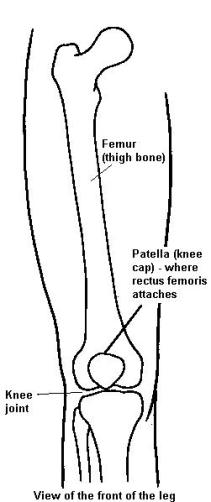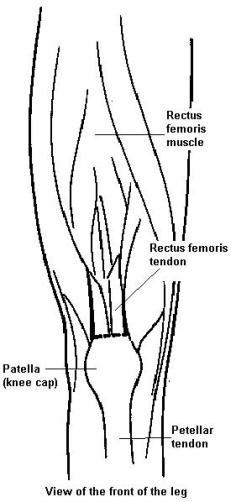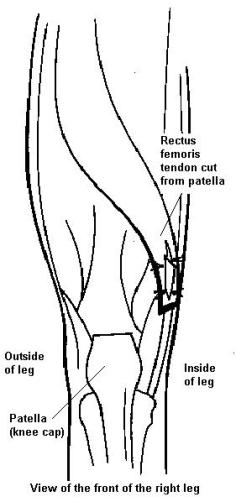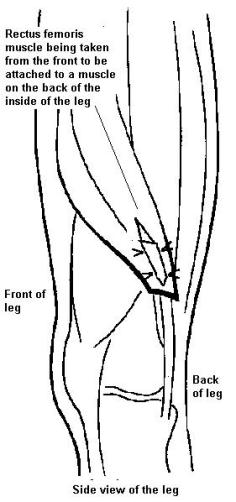- A tight or spastic rectus femoris (muscle on the front of your thigh) will cause the knee to be too straight (in extension) and a stiff knee during walking.
- The surgery is done to improve knee bending (flexion) when it is limited by a tight or spastic rectus femoris muscle
Your child's surgeon will make a cut at the front of the leg above the knee cap.
The rectus femoris tendon is detached from the top of the knee cap.
The tendon is then transferred and reattached to a muscle (semitendinosus) on the inside back of the leg, just above the knee.
This allows the rectus femoris muscle to bend (flex) the knee instead of straighten (extend) the knee.




(Illustration by Gillette Children's Specialty Healthcare)
